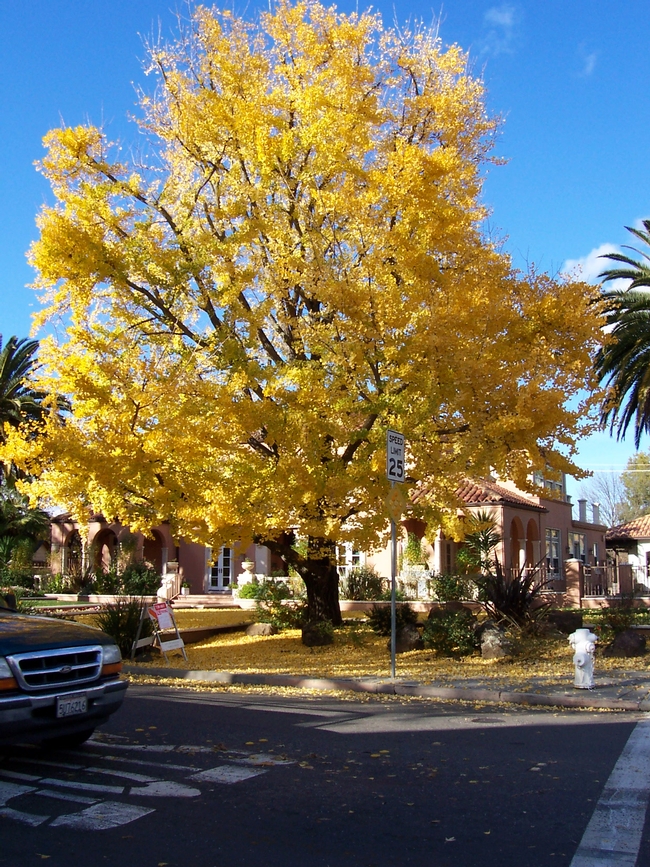Mellow Yellow
It’s the day after Thanksgiving. Time to get ready for Christmas, right?
Perhaps we should soak up what remains of autumn before we embrace the wintry wonders of the holiday season. Get outside and look at all the fall color in our area. This year seems particularly colorful. The Chinese pistache (Pistacia chinensis) trees glow nearly fluorescent pink-orange, the liquidambars (L. styraciflua) are the pyramidal gold-orange-red standouts, the burgundy ‘Raywood’ ashes (Fraxinus oxycarpa) look positively velvety, and the Japanese maples (Acer palmatum) are the petite rubies and topazes of the landscape. Even the crape myrtles put on a good show, before the winds of November stripped most of them nearly bare.
If you’re in downtown Vacaville soon — perhaps for Merriment on Main on Tuesday, Nov. 29, when the community Christmas tree is lighted at 6 p.m. — you really ought to see what I think is the best example of fall beauty in all of Solano County. On the corner of Buck Avenue and West Street, in front of what is still called the old Hartley house, is an absolutely stunning Ginkgo biloba tree. I’m not sure of its age, but considering its size and how slow growing these trees are, it must be close to a century old. This tree literally stops traffic when it goes gold, which should be right about now.
Ginkgos, also known as maidenhair trees, are considered living fossils. In fact, fossils of the ginkgo’s distinctive fan-shaped leaves have been found that date back to 270 million years ago. The trees were long thought to be extinct in the wild, but are now native to two small areas in China.
If you’re interested in planting one — ginkgos do well in our zones — be aware of the sex of the tree you choose. According to the UC Integrated Pest Management website, “Male trees are better as female trees produce messy, smelly fruit. Trees prefer areas with full sun. Plant in loose, well-drained soil, and provide moderate to regular amounts of water. Established trees only need occasional water.” (Check for more information on the few problems ginkgos face: http://www.ipm.ucdavis.edu/PMG/GARDEN/PLANTS/maidenhair.html)
Of course, one thing leads to another with all this lovely color. The season is called “fall” for a reason.



Posted by Sharon Leos on November 27, 2011 at 12:49 PM